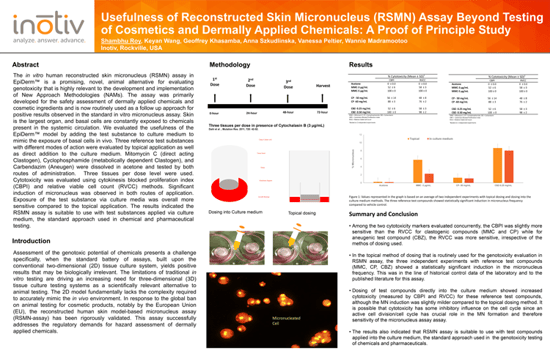
The limitations of traditional in vitro testing are driving an increasing need for three-dimensional (3D) tissue culture testing systems as a scientifically relevant alternative to animal testing. Specifically, assessing the genotoxic potential of chemicals presents a challenge when the standard battery of assays, built upon the conventional two-dimensional (2D) tissue culture system, yields positive results that may be biologically irrelevant. The 2D model fundamentally lacks the complexity required to accurately mimic the in vivo environment.
In response to the global ban on animal testing for cosmetic products, notably by the European Union (EU), the reconstructed human skin model-based micronucleus assay (RSMN-assay) has been rigorously validated. This assay successfully addresses the regulatory demands for hazard assessment of dermally applied chemicals.
Scientific expertise was paramount in this validation. Our team at Inotiv was involved from the inception of utilizing this 3D skin model-based approach for genotoxicity hazard assessment. The in vitro human reconstructed skin micronucleus (RSMN) assay, specifically using EpiDerm™, represents a highly relevant, novel New Approach Methodology (NAM) for genotoxicity evaluation, offering a sophisticated animal alternative.
Inotiv provides Good Laboratory Practice (GLP)-based genotoxicity assays using these advanced 3D human skin tissues. These services are critical for the cosmetic industries evaluating chemicals used in their skincare products. Critically, these assays are fully aligned with OECD (Organisation for Economic Co-operation and Development) testing guidelines and have earned broad acceptance from regulatory agencies worldwide, ensuring data integrity and global compliance.
Click here to view the full poster and learn more!

